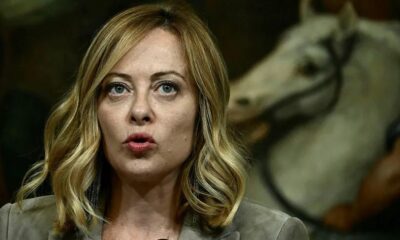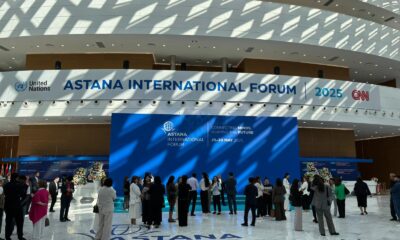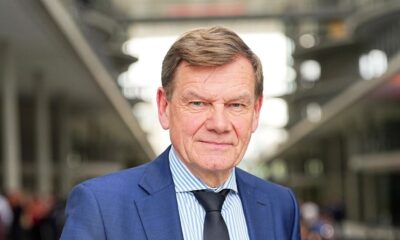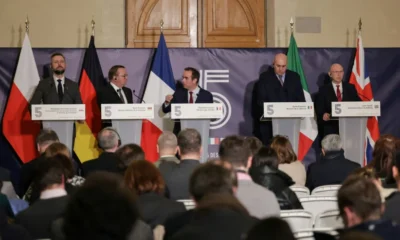Europe
Berlusconi’s legacy: Christian Europe united by a free market spirit

Italy was the most important country where an ‘anti-fascist consensus’ was established after the Second World War, albeit at an official level. The adoption of universal suffrage, the creation of the Constituent Assembly and the drafting of the Constitution were participated in by all the forces involved in the antifascist liberation struggle. The anti-fascist struggle in Italy had also turned into a war of liberation with the occupying Nazi Germany and the establishment of the collaborationist ‘Salo Republic’.
“Albeit at the official level” we said. Although the Italian Communist Party (PCI), the main organization of the partisans who were the vanguard of the anti-fascist resistance, was included in this consensus, the regime in Italy was controlled by a party of order, with the Christian Democrats (DC) at its center, at the behest of the US and NATO. This party of order did not hesitate to use its striking power against the communists through Gladio and the mafia. The PCI, even though it did not seek power, was another country within the country, another society within Italian society. Its prestige was high due to its sacrifices in the resistance. It was organized within the working class. In the 1976 elections, it received 34.4 percent of the vote and caused considerable fear in the establishment.
This, roughly speaking, reflected the balance of forces in the Italian First Republic. In the 1980s, two important transformations began to take place: First, the Italian establishment shifted to a strategy of high interest rates and currency devaluation, with the plan of full integration into the European common market. This was a strategy with which we were very familiar: Under the guise of ‘competitiveness’, lowering labor costs, cutting consumption of working people, reducing access to credit for small producers, intensive financialization and a partial transfer of sovereignty to Brussels. The second and perhaps more surprising development was the rapid adaptation of the PCI to these austerity policies. Italian communism may have begun to poison itself earlier, but it meant that a critical threshold had been crossed. It is very telling that the PCI’s vote in the last elections in 1987, in which it participated as a party, fell to its lowest level in 20 years.
It meant that the balance of forces on which the First Republic had been based was overturned. With the end of the Cold War, the corruption, nepotism, state-mafioso collaboration of the Italian Socialist Party (PSI), which was one of the wings of the party of order along with the DC, was being exposed. This period, known in our country as the ‘Clean Hands’ operation, marked the end of the First Republic in Italy and ushered in the ‘magistrate’ rule.
It was around this time, as the magistrate administration was running out of steam, an unknown boss announced that he would take the field to ‘fight communism’.
But was there communism left?
The PCI refashioned and renamed itself the Party of the Democratic Left (PDS). Considering the PDS reformist, the revolutionaries formed the Communist Refoundation Party. The latter group was also appreciated decently by former PCI voters. The 1993 local elections resulted in a decisive defeat for the DC and a partial victory for the PDS.
So Silvio Berlusconi began his fight against communism with the local election victory of the men of order in ties who were in fact whipping a dead horse. He declared the end of ‘party politics’ for Italy and said that the country would be governed by ‘completely new people’ in the new era. There was no more ‘popolo’ (people), there was ‘gente comune’ (ordinary people). The fate of Italy would no longer be decided by the people, but by the ‘free association of the electorate’. Against the ‘cartel of leftist forces’, he called for a ‘pole of freedom’ that would combine free enterprise and love of work with the family values of Catholic Italy.
Berlusconi was waging a war against the ‘traditional elites’ (i.e. those entrenched in the balance of power of the First Republic) and demanding an end to the Clean Hands operations.
Berlusconi challenged politics and politicians, arguing that only with a business spirit could the state become functional again.
It should not be surprising that the Lega, one of the critics of this ‘cumbersome state-business spirit’, today forms a coalition with Berlusconi’s party. It should also come as no surprise that a large proportion of DC voters in the First Republic voted for Forza Italia. After the electoral law was changed in 1993, there was a shift towards American-style two-party rule. Here Berlusconi took his place on the Italian political scene as the main element that carried the old DC mass base into the new era. In the Second Republic, where the mass base was marginalized and organizational politics was declared redundant, personalities came to the fore, and the figure of the leader who came into contact with the ‘electorate’ took the place of the man of the organization. The late Berlusconi was also working to establish this order. His media empire was the most important tool in creating a ‘charismatic’ figure. He would recreate the Italian right in his own image.
Contrary to what those who referred to him after his death as a ‘lover of national sovereignty’ might think, like all Italian parties in the 1990s and 2000s, he saw the EU as an external element that would ‘normalize’ Italy, as a tool that would free the state from sluggishness by forming fiscal discipline.
Together with his alliances with the Brothers of Italy and the Lega, he worked hard to establish an ‘anti-political’ right-wing discourse, now called the ‘post-fascist consensus’. His aphorism “Mussolini was not that bad dictator” describes this consensus well. The anti-fascist insurgents, the main engine of the First Republic, are now portrayed as just as brutal, cruel and violent as the fascists. Fascist shock troops and anti-fascist partisans deserve to be referred to together as ‘children of this land’. It is such a farce that the President of the Senate, Ignazio La Russa of the Brothers of Italy, who said that there was no anti-fascism in the Italian Constitution, was able to attend the ‘Liberation Day’ ceremonies a few days later. Even worse, the same Russa still has a bust of Mussolini in his house, an heirloom of his father.
It was unthinkable that this consensus, which had been reinforced by the PDS’s shift to the ‘center’, would not be shaken by the 2008 crisis. The first solution to this crisis was the domination of technocratic governments, adherence to Brussels and the mania for privatization. The technocratic governments imposed on Italy a wave of marketization that even Berlusconi at times hesitated to undertake. This period saw the disintegration of parties on the left and the right: The Democratic Party and Berlusconi were losing. Meanwhile, the mafioso leader was being investigated for corruption (a commonplace in Italian politics) and sidelined. By the 2018 general elections, the combined vote of the Democratic Party and Forza Italia did not even reach 33 percent. Henceforth, the 5 Star Movement (M5S) of comedian Beppe Grillo, an internet phenomenon, and the Lega, which took an ‘Italian nationalist’ position by trying to disassociate itself from the north, were at opposite ends of the political theatre. The M5S leader at the time, Luigi Di Maio, was not afraid to state the obvious: The Second Republic dominated by Berlusconi and the ‘center-left’ was dying.
That he is the symbol of the Second Republic should not mislead anyone. He always had friends in the First Republic too. Although he was never a member, he had very good relations with the PSI, the party of order of the first republic. With the collapse of the Second Republic, the fact that he managed to reinvent himself and throw himself into the right-wing coalition should be considered a success.
From now on, it seems inevitable that Forza Italia will be swallowed up by the other coalition partners. If the matter is charisma, Meloni and Salvini seem to have it all. Moreover, he seemed to have overcome his occasional polemics with Brussels: At the party congress, which he attended from his sickbed, he emphasized European unity against ‘Chinese imperialism’, differentiated his party from the likes of Marine Le Pen, and secured his place in the ‘center-right’ European People’s Party (EPP) in the European Parliament. This is the ‘legacy’ of the Second Republic and Berlusconi’s death: Christian Europe and Italian values, united by a free market spirit.
Europe
France bans Israeli arms manufacturers from Paris Air Show
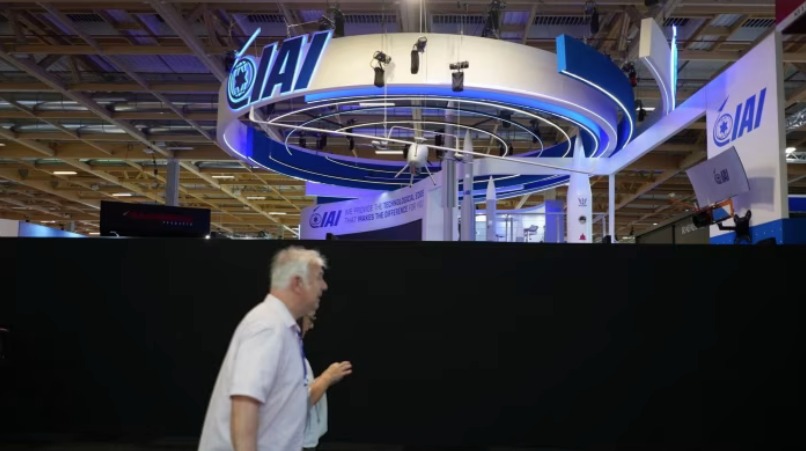
France has banned four Israeli arms manufacturers from the Paris Air Show, escalating diplomatic tensions over the Gaza conflict and leading to accusations of discrimination.
This decision marks the latest sign of escalating tensions between the two countries over Israel’s occupation and blockade of Gaza.
The booths of Elbit Systems, Rafael, Israel Aerospace Industries (IAI), and Uvision were blocked off with black barriers on Monday after they refused to comply with the French government’s directive not to display offensive weapons.
In a statement, the Israeli Ministry of Defense declared, “This outrageous and unprecedented decision is the product of political and commercial concerns,” accusing France of trying to remove “weapons that are competitors to French industry” from the show.
“This decision was made at a time when Israel is fighting a necessary and just war to eliminate the nuclear and ballistic threat that endangers the Middle East, Europe, and the entire world,” the statement continued.
Diplomatic relations between Israel and France have deteriorated in recent months as French President Emmanuel Macron has intensified his criticism of the ongoing war in Gaza.
Macron is also spearheading an international initiative for the recognition of a Palestinian state, a move that Israel’s right-wing government is determined to block. Israeli Prime Minister Benjamin Netanyahu has condemned this initiative.
On the other hand, Macron has supported Israel’s right to defend itself against Iran’s nuclear threat, endorsing its actions against Iran.
According to French officials, the French government repeatedly communicated the ground rules to Israel over the past few weeks. Four of the nine Israeli companies participating in the Paris Air Show complied with the order not to display offensive weapons, and their booths remained open. The Israeli Ministry of Defense’s booths were also open on Monday.
A French official stated that the Israeli companies, which design and manufacture everything from unmanned aerial vehicles and air defense systems to missiles and aircraft, would be allowed to reopen their exhibits if they made the required changes.
IAI’s CEO, Boaz Levy, said the company tried to negotiate with the organizers but found its booth “closed off by black walls built overnight” on Monday morning.
“This kind of behavior is unacceptable and discriminates against us as Israelis and Jews, as all other participants in this air show were not subjected to these restrictions,” Levy added.
This is not the first time France and Israel have clashed over aviation and defense exhibitions since the Al-Aqsa Flood operation on October 7, 2023. After the French government decided that Israeli companies should not exhibit offensive weapons, dozens of Israeli firms were excluded from the Eurosatory exhibition in June 2024 and the Euronaval exhibition in November 2024.
The air show’s organizers announced that discussions are ongoing with various parties to “find a suitable solution to the situation.”
SIAE, a subsidiary of the French Aerospace Industries Association which organizes the event, stated that it had complied with “the instruction of the relevant French authorities to remove certain equipment exhibited at the Israeli stands” before the event.
SIAE added that the companies in question “still received permission to exhibit at the show.”
Europe
European gas prices rise amid fears of an escalating Middle East conflict
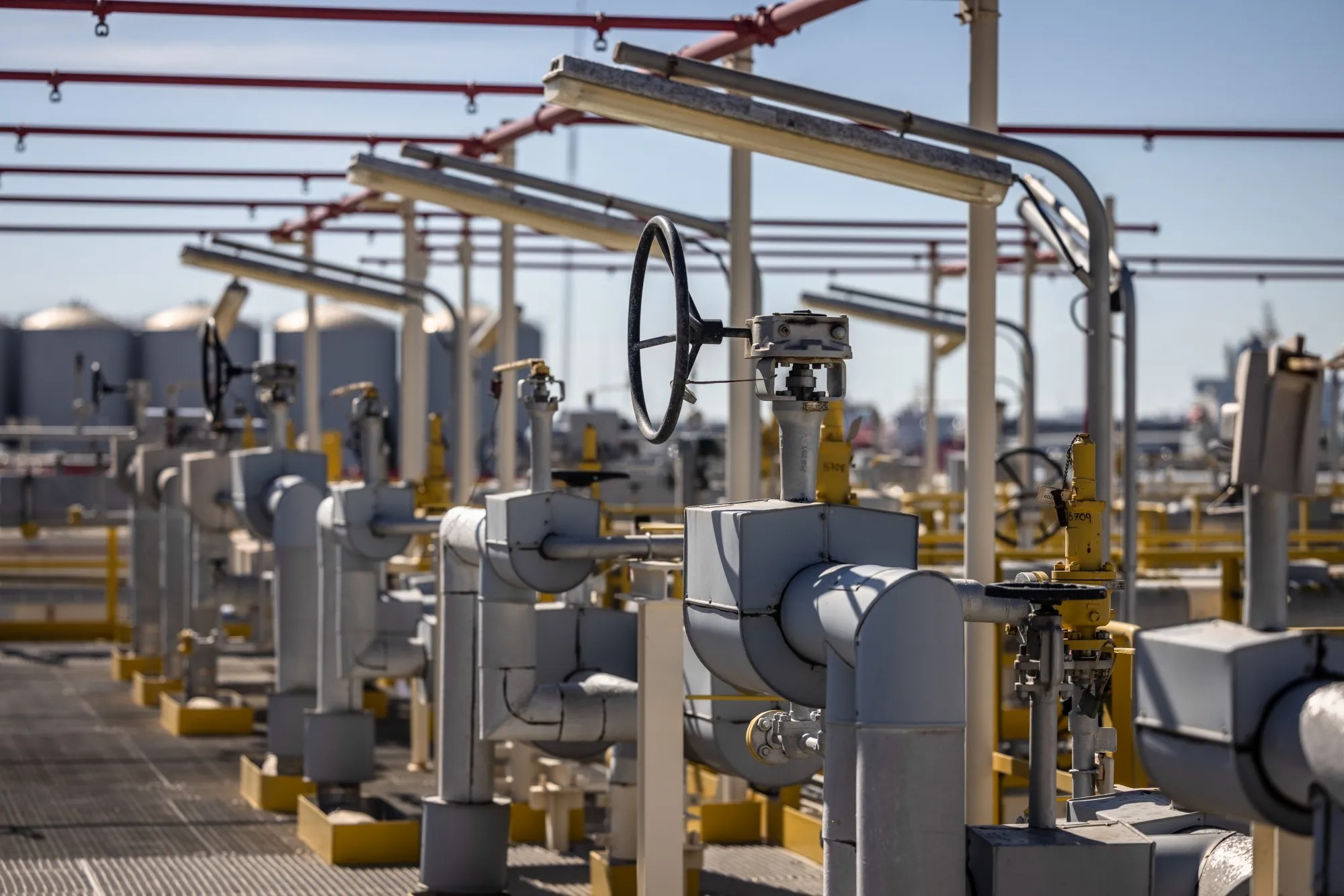
European natural gas prices have risen as traders prepare for the possibility of an escalating Israel-Iran conflict and the associated risks to global energy supply.
According to a report from Bloomberg, benchmark futures, which followed a volatile course in the previous session, increased by as much as 1.8%. US President Donald Trump demanded the evacuation of Tehran and later said that his early departure from the G7 summit in Canada had “nothing to do” with ceasefire efforts between Israel and Iran.
Although Europe appears to be in a good position regarding supply for now, its heavy dependence on the global flow of liquefied natural gas (LNG) makes prices susceptible to sharp movements if geopolitical developments pose a risk to international energy trade. The continent will need more fuel in the coming months to replenish its natural gas storage, which fell to a three-year low this winter.
The most significant threat comes from the possibility that Iran could close the Strait of Hormuz if the war escalates, thereby blocking shipments from Qatar, the largest LNG exporter. As the strait is also a vital route for oil shipments from the region, traders are closely monitoring tanker movements.
According to Goldman Sachs analysts Samantha Dart and Frederik Witzemann, the impact of the conflict on international gas markets has been limited so far. Modest imports by China have made more fuel available for other buyers, such as Egypt, which rushed to find alternative suppliers after Israel cut off its flows.
Additionally, traders are following the European Union’s plans to phase out its dependence on Russian pipeline gas and LNG supplies by the end of 2027. This supply currently accounts for about 13% of the region’s imports. On Tuesday, the European Commission will announce its detailed proposals regarding the ban on these flows.
The Dutch front-month futures, Europe’s benchmark natural gas price, rose by 0.6% to €38.12 per megawatt-hour at 8:52 AM in Amsterdam.
Europe
Germany holds first national veterans’ day since World War II

On Sunday, June 15, Germany held its first celebration for military veterans since the Second World War.
Defense Minister Boris Pistorius joined current and former soldiers and members of the public for events across the country, including a “veterans’ village” constructed in front of the Reichstag building in Berlin.
This marks a historic shift in a country where anything that could be seen as a “display of militarism” has been considered taboo for decades.
The new commemoration, established by a parliamentary resolution passed last year, is designed to “express gratitude, appreciation, and respect” for the Bundeswehr, Germany’s federal army.
The German Bundestag emphasized that the day also aims to deepen the bond between the military and the German people. At the ceremony in Berlin, Bundestag President Julia Klöckner of the CDU described the Bundeswehr as a “parliamentary army,” stating that this places a special responsibility on lawmakers.
She also acknowledged the demanding and often stressful nature of military service, stressing the need to provide soldiers with appropriate support.
Chancellor Friedrich Merz also stated on the social media platform X, “The Bundeswehr is an integral part of our society,” adding that those who serve or have served in the military deserve widespread appreciation, respect, and recognition.
“There won’t be tanks and fighter jets. We’re not there yet. But we are taking a really good first step,” Lieutenant Colonel Michael Krause, head of the newly established national veterans’ office, told the Financial Times (FT), comparing it to major military events in other countries.
Germany is channeling money and resources into its armed forces in response to NATO’s concerns about “Russian aggression.” The new chancellor, Friedrich Merz, has pledged to make Germany’s military the “strongest conventional army in Europe.”
Sarah Brockmeier-Large from the Peace Research Institute Frankfurt said that the fact politicians finally agreed to hold a veterans’ day is “a symbol of a growing appreciation in German society that we need functioning armed forces and that soldiers provide a vital public service.”
Berlin’s role in two world wars created a deep-seated skepticism toward military power after 1945, particularly in West Germany, leading to the emergence of a strong pacifist movement.
For decades, the term “veteran” was mostly associated with those who fought in Adolf Hitler’s Wehrmacht, not with those who served in the Bundeswehr, which was founded in 1955 and placed under strict parliamentary control.
“We couldn’t be proud of our old wars. That’s why in the 50s, 60s, and 70s, there was no veteran culture in the German Bundeswehr,” said Patrick Sensburg, president of the German reservists’ association.
During the Cold War, when Germany was divided, the Bundeswehr only participated in operations outside NATO territory to assist with natural disasters.
After “reunification” in 1990, the National People’s Army of the German Democratic Republic was disbanded, and a small number of its soldiers joined the Bundeswehr.
The newly unified army soon began participating in combat operations abroad. German warplanes helped bomb the former Yugoslavia during the NATO-led Kosovo mission in 1999.
But the most significant event for the veterans’ movement was the participation of 93,000 German soldiers in the US-led war in Afghanistan over nearly 20 years. Initially declared a German peacekeeping mission, it evolved into a combat operation as Bundeswehr troops fought the Taliban.
A total of 59 German soldiers were killed in the conflict, which also claimed the lives of about 3,000 American and allied soldiers and more than 100,000 Afghan civilians.
Those who served in Afghanistan, including many who returned home with physical and psychological wounds, initiated a grassroots movement to establish a veterans’ day, inspired by events like Anzac Day in Australia and New Zealand, Armed Forces Day in Great Britain, or Veterans Day in the US.
In 2012, an attempt by then-defense minister Thomas de Maizière to introduce the idea failed due to widespread political opposition.
“I think it was too early,” said military historian Sönke Neitzel, noting that at the time, Germany’s combat operations in Afghanistan were still seen as something that “should never have happened.”
But the pressure from former soldiers and the associations established to care for them continued.
Last year, German lawmakers approved a new plan to celebrate veterans “publicly and visibly” every year on June 15. Defense Minister Pistorius called it a “strong, important, and, yes, overdue sign of appreciation and gratitude.”
There is still opposition to the idea. Die Linke (The Left Party), which received 9% of the vote in the February parliamentary elections, organized an event in Berlin on Sunday titled, “We will not celebrate your wars.”
The party argued that the new veterans’ day was designed to “make war acceptable” and create “cannon fodder” for the German armed forces, at a time when military leaders are warning they need to recruit tens of thousands of additional soldiers in the coming years.
In the eastern states, formerly part of the German Democratic Republic, there is widespread opposition to Germany being one of Ukraine’s largest arms suppliers, partly due to the region’s historical ties with Russia.
But Katja Hoyer, a historian and author of the book Beyond the Wall: East Germany 1949-1990, argued that East Germans, who are disproportionately represented in the lower ranks of the Bundeswehr, still show broad support for the military and those who have served in it.
“The idea of rearming and strengthening the Bundeswehr is not a problem for many East Germans. There is a difference between the attitude towards the military in general and the attitude towards this conflict [in Ukraine],” she said.
The establishment of an annual event has been welcomed by veterans, although some remain cautious.
Thorsten Gärtner, a senior sergeant in the Bundeswehr who served five tours in Afghanistan and suffers from post-traumatic stress disorder, said he still does not always feel comfortable wearing his uniform on public transport in Berlin.
“I hope that one day it will be like in other countries, like the US, with an ID card for veterans and a 10% discount everywhere. I doubt that will happen. It’s not yet accepted. It will take a very long time,” Gärtner said.
Meanwhile, Prince Harry of the United Kingdom also released a video message in German to commemorate Germany’s first Veterans’ Day.
In his message, the Duke of Sussex wore various ceremonial medals, including the Afghanistan Campaign Medal, the Golden Jubilee Medal, the Diamond Jubilee Medal, and the Platinum Jubilee Medal.
Beginning his message in fluent German, the prince greeted viewers with “Guten Tag Deutschland” (Good Day Germany) before switching to English.
Prince Harry claimed it was a “great honor” to be tasked with delivering a message to the Germans on their inaugural Veterans’ Day. He said, “The warmth, enthusiasm, and unwavering support shown by the German people to our global community of wounded soldiers was truly impressive. You have certainly delivered on your promise to create a home of respect.”
Prince Harry praised the strength and resilience of veterans, describing them as “living testaments to resilience and moral courage.”
“Today, let us together renew our commitment to serve one another, to protect the freedoms that define who we are, for the enduring promise of peace, dignity, and democracy,” he added.
-

 Opinion2 weeks ago
Opinion2 weeks agoEuropean defense autonomy and Germany’s military role enter a turning point
-
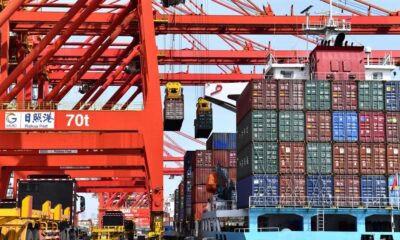
 Asia2 weeks ago
Asia2 weeks agoOECD forecasts slower Chinese economic growth due to trade war
-
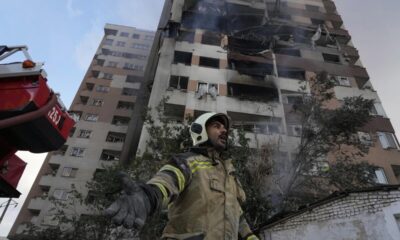
 Diplomacy5 days ago
Diplomacy5 days agoFormer diplomat warns forcing Iran out of the NPT is the greatest danger
-
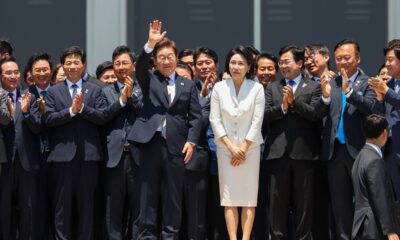
 Asia2 weeks ago
Asia2 weeks agoLee Jae-myung inaugurated as South Korea’s new president, vows unity and economic revival
-

 Asia1 week ago
Asia1 week agoJapan, US showcase B-52 bombers in nuclear deterrence dialogue
-
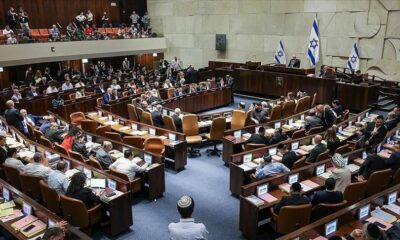
 Middle East7 days ago
Middle East7 days agoNetanyahu’s government survives no-confidence vote as Haredi crisis is delayed
-
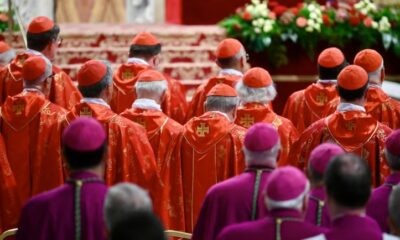
 Europe2 weeks ago
Europe2 weeks agoVatican under Pope Leo XIV warns against AI ‘playing God,’ urges ethical development
-

 Europe2 weeks ago
Europe2 weeks agoMerz government plans €46 billion corporate tax cut for Germany


